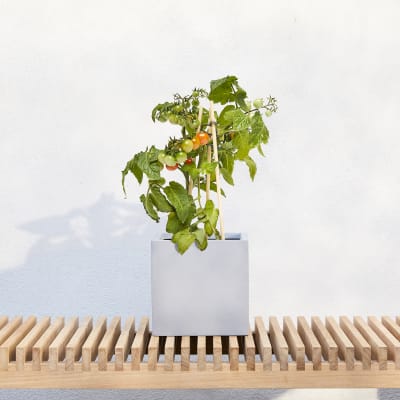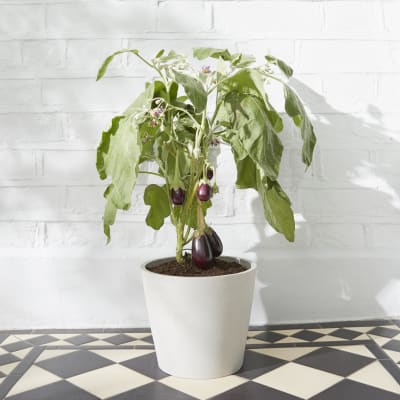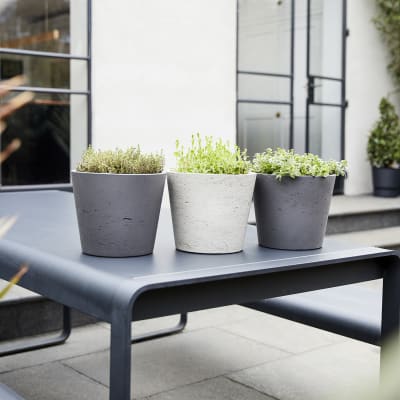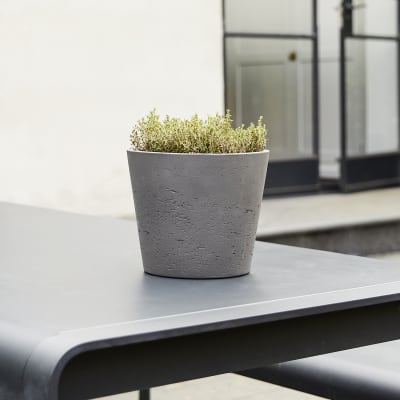

£0.00
One of the most exciting aspects of starting to garden is the idea of growing your own food.
What could be better than realising you need an ingredient, only to remember that you have it growing on your windowsill or balcony? We might be biased, but we swear that stuff you’ve grown yourself tastes better too.
There are endless edible plants that you can grow, each with its own likes and dislikes, but herbs are one of our favourite things to get started growing.so we’re going over a few of our favourites.
Herbs are a really easy way to get started growing edible plants. Although we often pick them up from the supermarket to keep in our kitchen, most herbs are much happier outside.
Usually you’ll just need to pick the herbs you’d like to eat plant them up and keep them watered. In general herbs like quite a lot of sun and well-draining compost. Remembering the kind of climate a herb comes from will help you give it the best treatment: basil, thyme and rosemary like sunshine and drier soil than shade-loving, thirsty mint and parsley. It’s worth reading up on the basics of what your favourites need.
You can also try growing herbs from seed if you want more of a challenge - we cover that in another section.we’ll cover that in the next lesson.
Tomatoes are another popular option for starting your edible garden project. The super easy option is to plant up seedling tomato plants, rather than seeds, in late spring. There are three main sizes of tomato - cherry, standard, and beefsteak - with many varieties within those. You can grow any size of tomato you fancy, but check its growing habits before choosing a variety. Some tomatoes grow in an ‘indeterminate’ manner, meaning they can grow to be giants. They can work in containers as long as you’re happy with them tumbling over the edges and all benefit from staking - this stops the stalks snapping under the weight of the plants. The size of the pot will limit their growth to some degree but for container gardening it is easier to go for a ‘determinate’ variety, which will grow as a bush.
Remember that tomatoes like lots of sun, frost free conditions and regular feeding to grow healthy fruit. They need a specific tomato fertiliser, but this can also be used on other edibles such as chillies, so it’s still a great multi-purpose product to have around.
Tomatoes, and other veg, can suffer from powdery mildew which looks like a white or grey powdery covering on your plant’s leaves or stems.
Powdery mildew develops when your plant is too wet. Only water when the soil is dry a knuckle deep and make sure your plant has good drainage - this will also prevent the fruit rotting.
If you’re after a bit of heat you could also try starting with chillies. Pick up a young plant in early summer and it should see you through to around October, or sow seeds as early as January to get a good head start.
Chilli plants can be kept either inside or outside, but either way, they like light and heat - like a bright windowsill. If you want to keep it outside, it best to give it a chance to adapt by bringing it back in during the night for a few days before committing it to an outside spot permanently.
When you first pick up your plant, check that it has enough space in its current pot. Look to see if you there are roots sticking out of the surface of the soil, or coming out of the bottom of the nursery pot? If yes, repot it into a bigger container. This will keep the plant happy and as a result it will produce more peppers.
While the plant is young it’s best to keep the soil moist to help it grow, but once it’s settled in and a bit bigger you can hold back on the water to produce a hotter chilli.
If you pick up a plant that isn’t producing chillies yet, but it does have flowers, it it needs to be pollinated. If it’s outside insects will take care of this for you, but if it’s on an indoor windowsill you can also pollinate it yourself by transferring some pollen from one flower to another with a cotton bud.


£15.00
Fits pots 17-20cm
Out of stock


£15.00
Fits pots 17-20cm
Out of stock


£8.00
Out of stock
See options
Free standard delivery on orders over £50
Need to get in touch?
Just use the help widget to send a message to the team.
Customer service opening hours:
Monday to Sunday 9am-8pm
Live chat is available 10am-5pm Monday to Friday
Secure payment - our systems are protected with bank-grade security. Your payment is safe with us.
We work directly with over 40 specialist growers to bring you the best quality plants
If you need advice, just get in touch - we’ll be your personal plant gurus as long as you need us. If something’s up, tell us within 30 days of delivery — we’ll sort it.
We usecookiesto improve your experience on our site.